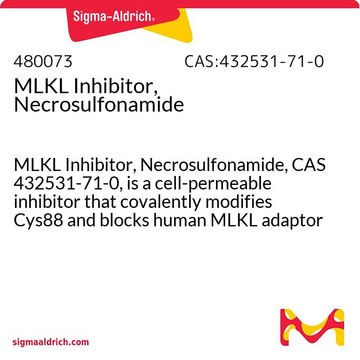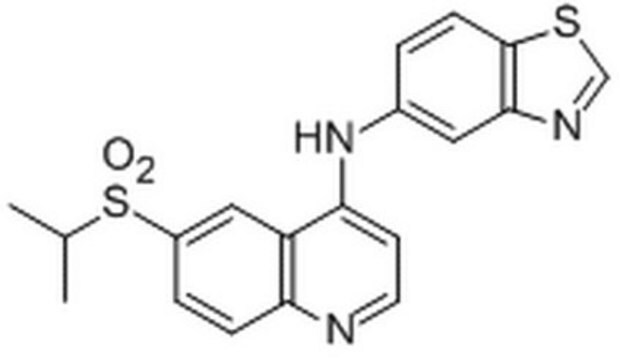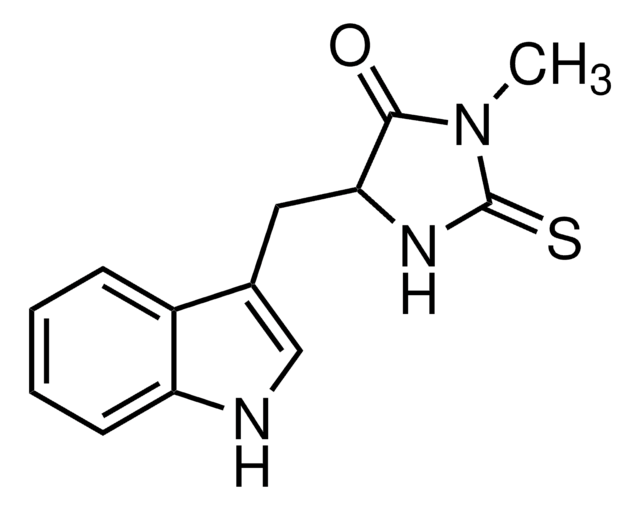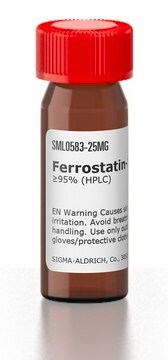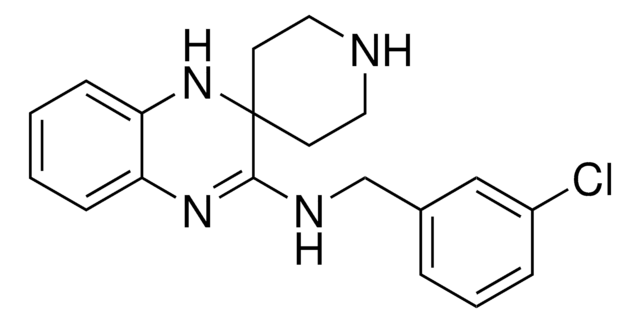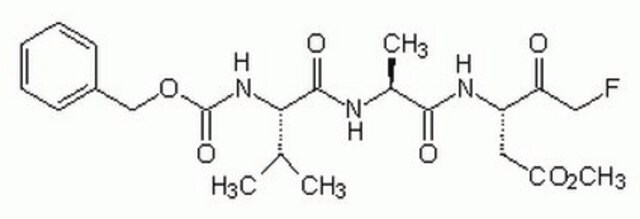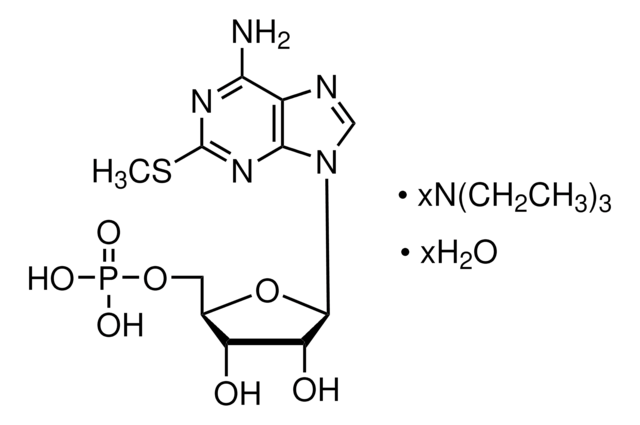推荐产品
化驗
≥98% (HPLC)
形狀
powder
顏色
white to beige
溶解度
DMSO: 2 mg/mL, clear
儲存溫度
2-8°C
SMILES 字串
O=C(C(C)(C)C)N1[C@H](C2=CC=CC=C2)CC=N1
生化/生理作用
GSK′963 (GSK′963A) is a brain-penetrant, highly potent and selective ATP site-targeting receptor-interacting protein 1 kinase (RIP1; RIPK1) inhibitor (IC50 = 0.8-8 nM with 50 μM ATP; IC50 >10 μM against RIPK2/3/5 and 335 other kinases) that protects against TNFα/zVAD-induced necroptosis (EC50 = 1/4 nM in mouse L929/human U937 cultures) and blocks Y. pestis-induced death of murine fetal liver macrophages (1 μM). GSK′963 prevents lethal hypothermia by acute sterile shock (2 mg/kg i.p. 15 min prior to TNFα/zVAD i.v.) and protects against acute neuronal death upon autologous blood intracerebral hemorrhage induction in mice in vivo (25 mg/kg/3 hr i.p.).
儲存類別代碼
11 - Combustible Solids
水污染物質分類(WGK)
WGK 3
閃點(°F)
Not applicable
閃點(°C)
Not applicable
Sevda Lule et al.
Stroke, 48(9), 2549-2556 (2017-08-03)
Recent studies using cultured cells and rodent intracerebral hemorrhage (ICH) models have implicated RIPK1 (receptor interacting protein kinase-1) as a driver of programmed necrosis and secondary injury based on use of chemical inhibitors. However, these inhibitors have off-target effects and
Hongyan Guo et al.
Cell host & microbe, 17(2), 243-251 (2015-02-13)
Herpes simplex virus (HSV)-1 and HSV-2 are significant human pathogens causing recurrent disease. During infection, HSV modulates cell death pathways using the large subunit (R1) of ribonucleotide reductase (RR) to suppress apoptosis by binding to and blocking caspase-8. Here, we demonstrate
Anne von Mässenhausen et al.
Cell death & disease, 9(3), 359-359 (2018-03-04)
Receptor-interacting protein kinases 1 and 3 (RIPK1/3) have best been described for their role in mediating a regulated form of necrosis, referred to as necroptosis. During this process, RIPK3 phosphorylates mixed lineage kinase domain-like (MLKL) to cause plasma membrane rupture.
Mohammad Ali et al.
Cell death & disease, 9(3), 346-346 (2018-03-03)
Proteasome inhibitors have achieved clinical success because they trigger intrinsic and extrinsic cell death to eliminate susceptible human cancers. The ubiquitin-proteasome protein degradation system regulates signaling pathways by controlling levels of components such as cellular inhibitor of apoptosis (cIAP)1 and
Alessandro Annibaldi et al.
Molecular cell, 69(4), 566-580 (2018-02-18)
Tumor necrosis factor (TNF) can drive inflammation, cell survival, and death. While ubiquitylation-, phosphorylation-, and nuclear factor κB (NF-κB)-dependent checkpoints suppress the cytotoxic potential of TNF, it remains unclear whether ubiquitylation can directly repress TNF-induced death. Here, we show that
我们的科学家团队拥有各种研究领域经验,包括生命科学、材料科学、化学合成、色谱、分析及许多其他领域.
联系技术服务部门